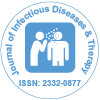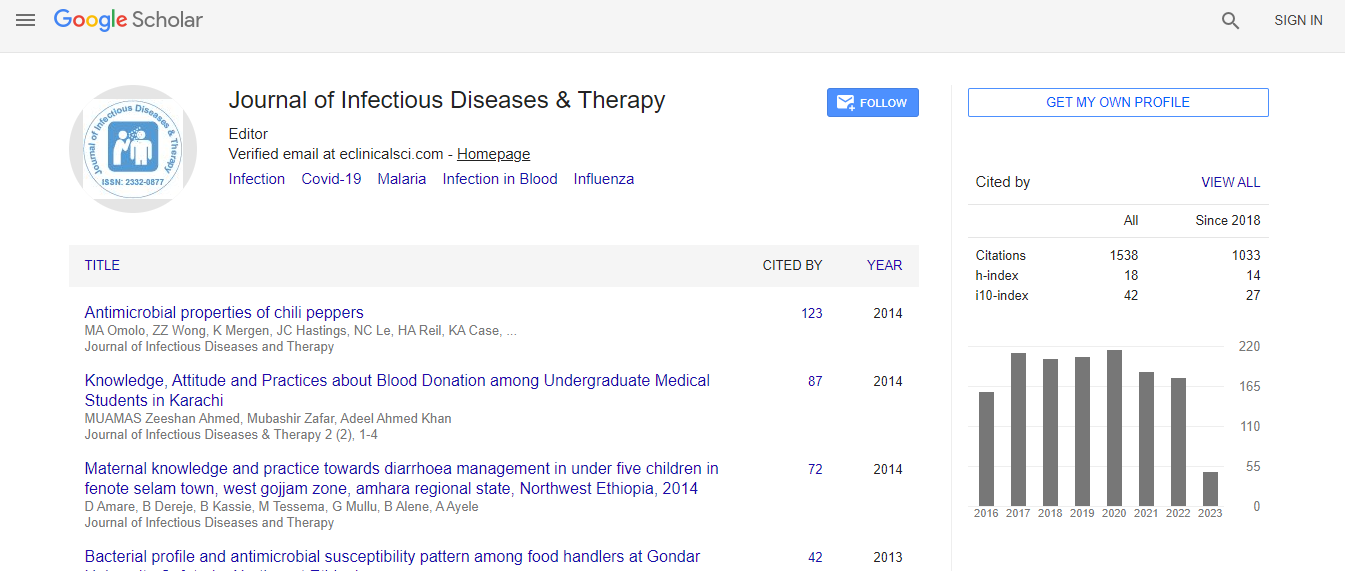Research Article
Burden of Anemia in Malarial Parasite Infection
| Jamal M1, Hameed A2 and Imtiaz F3* | |
| 1Department of Medical Technology, BAQAI Medical College, Pakistan | |
| 2Department of Biochemistry, Dow Medical College, Pakistan | |
| 3Department of Biochemistry, Dow Medical College, Dow University of Health Sciences, Karachi, Pakistan | |
| Corresponding Author : | Fauzia Imtiaz HOD Department of Biochemistry Dow Medical College Dow University of Health Sciences Karachi, Pakistan Tel: 0300-2116211 E-mail: f.imtiaz@duhs.edu.pk |
| Received: May 12, 2015 Accepted: August 24, 2015 Published: August 27, 2015 | |
| Citation: Jamal M, Hameed A, Imtiaz F (2015) Burden of Anemia in Malarial Parasite Infection. J Infect Dis Ther 3:228. doi:10.4172/2332-0877.1000228 | |
| Copyright: © 2015 Jamal M, et al. This is an open-access article distributed under the terms of the Creative Commons Attribution License, which permits unrestricted use, distribution, and reproduction in any medium, provided the original author and source are credited. | |
| Related article at Pubmed, Scholar Google | |
Abstract
Background: Malaria, being a major health problem in developing world, is a debilitating and at times lethal Infectious disease.
Objective: To observe the frequency and type of anaemia in patients who had malarial infection which may deteriorate the condition.
Design: Cross sectional study
Place and Duration: This study was conducted in two different tertiary care hospitals. From June 2009 to July 2011.
Patients and Method: A total of 834 malaria positive blood samples were taken after taking consent from
patients and their demographic characteristics were noted. Laboratory investigations were done including complete blood count. Complete blood count was performed by automated Coulter counter. The samples with low levels of haemoglobin in the blood were categorized as "anaemic”. All malarial positive cases were reviewed by a haematologist and data was analyzed using SPSS 16.0.
Results: The analysis revealed that, out of total 834 malarial positive samples, 65% females and 35% were males. Age range was 6 months to 50 years in male subjects and 1 year to 70 years in female subjects. 69% come to be Plasmodium vivax and 31% as Plasmodium falciparum. 120 cases (41.5%) in males show low level of haemoglobin (10.5 g%) and 40% among them show the well defined picture of hypochromic microcytic anaemia, while 72 cases (60%) give the picture of normochromic normocytic. In females, 516 cases (94.64%) show the low level of haemoglobin (9.0 g%) and 396 cases show Hypochromic microcytic anaemia, while 120 cases (23.21%) shows the normocytic normochromic blood picture.
Conclusion: In our sample population P.vivax found to be more frequent with hypochromic microcytic anaemia picture associated anaemia (58%), with low haemoglobin levels. Females showed greater prevalence of hypochromic microcytic anaemia as well as low Hb levels as compared to males significantly due to dietary deficiencies and other sources of blood loss.

 Spanish
Spanish  Chinese
Chinese  Russian
Russian  German
German  French
French  Japanese
Japanese  Portuguese
Portuguese  Hindi
Hindi 